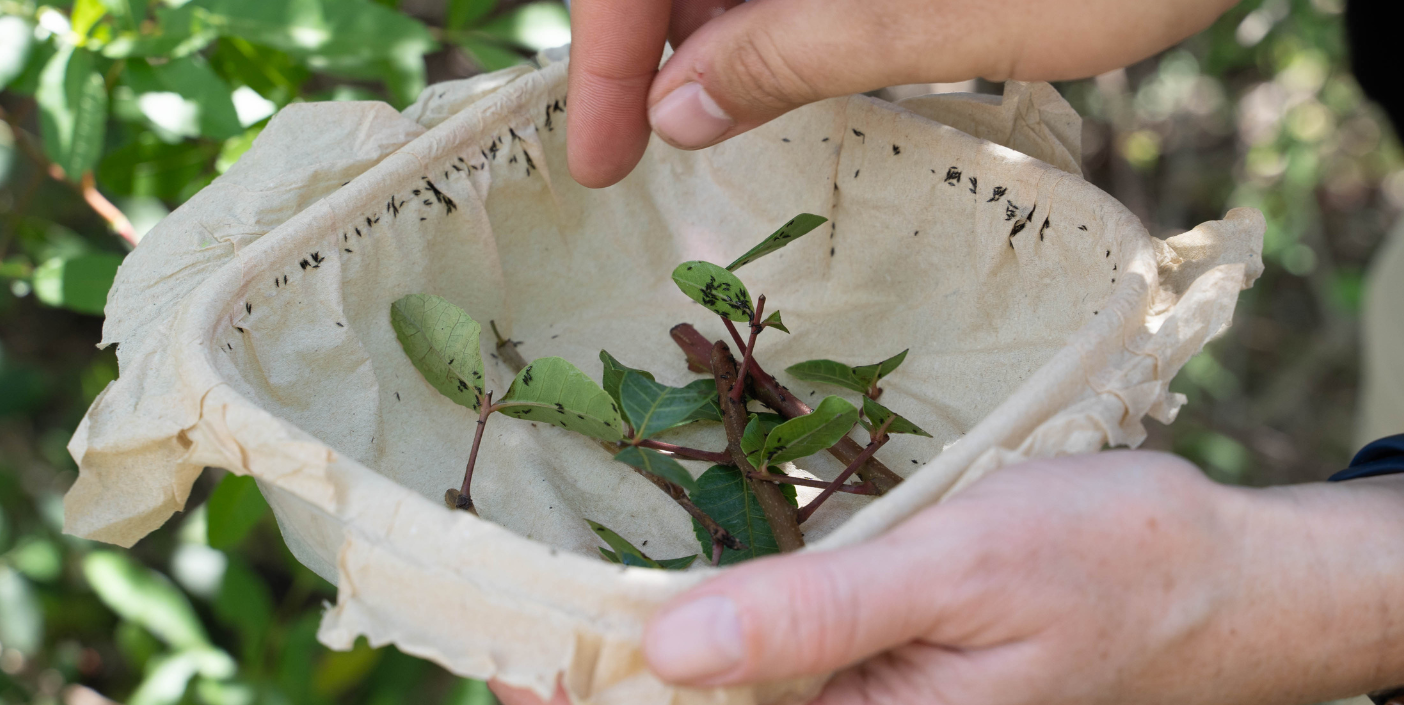
On a bright afternoon last month, members of our team and Melissa Smith, a U.S. Department of Agriculture research ecologist, unleashed 1,500 insects to go after one of the ecosystem’s worst enemies: Brazilian pepper (Schinus terebinthifolia).

The insects were a type of thrips. This species, Brazilian peppertree thrips (Pseudophilothrips ichini), has a singular appetite for Brazilian pepper, a small tree imported to Florida from South America in the mid-1800s for its ornamental value. But instead of landscape beauty, the tree proved itself an environmental menace. It gobbled more than 700,000 acres in central and south Florida, crowding out native species and eroding wildlife habitat. Today, the state spends more than $2.5 million a year to control Brazilian pepper on conservation land. Invasive plants, and Brazilian peppertree specifically, are among the leading factors of species decline in Florida and globally.
Control methods include manual removal and herbicide. In 2019, after decades of research, USDA’s Invasive Plant Research Laboratory in Fort Lauderdale unveiled the peppertree thrips. The little bugs won’t wipe out existing thickets of Brazilian pepper, like the one we introduced them to, but they will go after saplings, flowers, and new growth. Land managers eradicate mature trees by cutting and spraying.

These thrips are the latest example of USDA-developed biological control agents. Researchers like Smith have traveled to the countries of origin of other harmful plants such as melaleuca (Melaleuca quinquenervia) and old-world climbing fern (Lygodium microphyllum), identified bugs that keep the species in check, and brought them back to their highly secure lab. There, they test and observe the bugs to ensure they attack only the targeted plants from their home countries and do not harm other plants, wildlife, or people. The process can take as long as 20 years.
Biological control (or biocontrol) is a major reason why melaleuca no longer strangles South Florida. Melaleuca are thirsty trees imported to the United States around 1900 to help drain the region’s swamps, among other reasons. They were remarkably proficient, to the delight of turn-of-the-century developers; later generations, however, recognized the havoc they had wreaked on ecosystems. The fast-spreading trees went on to colonize about 20% of South Florida, including the land on which the Garden was established. USDA researchers identified three bugs that feed on melaleuca, killing 98% of seedlings, Smith said.
“Melaleuca is probably the biggest success story in Florida for biocontrols,” she said.
The Brazilian peppertree thrips are the first approved and released biocontrol we’ve introduced at the Garden to address an invasive plant. We’ve had a long practice of using beneficial bugs like parasitic wasps to control harmful ones such as whiteflies, a strategy that reduces pesticide use.
“I’m hoping (the thrips) will make our job controlling Brazilian pepper in the Garden easier,” Plant Health Manager Cameron Cole said. He and fellow staff members intend to let the population take hold in this thicket and then introduce them to other patches of the invasive tree in the Preserve.
Smith is optimistic, based on what the USDA has seen elsewhere.
“They love fresh, new growth,” she said. “In Brazil, they decimate seedlings, and we’re hoping they bring that activity here.”

About the Author
Jennifer Reed is the Garden’s Editorial Director and a longtime Southwest Florida journalist.

